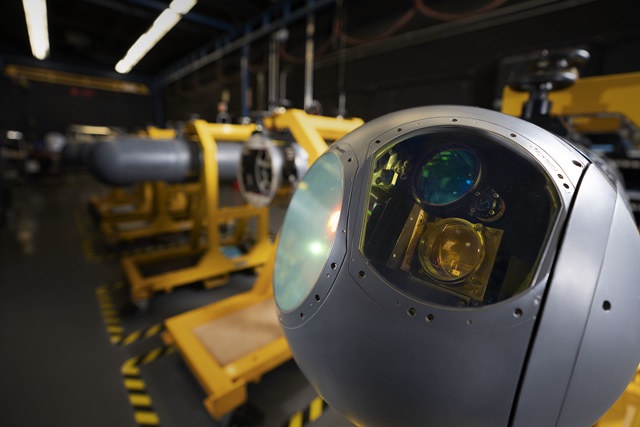 LITENING’s Digital Vision
LITENING’s Digital Vision
By Stephen Lamb
Is that an insurgent or a farmer walking toward the convoy? A fishing boat or a military craft approaching the ship? An aviator may have just seconds to make the call, and it is a choice fraught with consequences. Arriving at the right decision starts with information from sensors, but that is just the beginning. Making sense of what the sensors see turns imaging into actionable intelligence. It takes some serious processing power on the back end. The LITENING advanced targeting pod’s digital architecture provides it.
“As the amount of information available through LITENING’s sensors has grown with each generation, we have increased the processing power of the pod,” said Ryan Tintner, vice president, navigation, targeting and survivability, Northrop Grumman. “The current generation is truly a powerhouse, using a flexible, standards-based architecture to process vast amounts of imagery at the speed of combat.”
Clear imaging that provides insight to pilots has always been a hallmark of LITENING. The shift to a digital architecture is maximizing the benefits of the pod’s high definition suite of infrared, TV and laser cameras. In the cockpit, tablets and new, larger displays take full advantage of LITENING video in high resolution. The pod also records data from all sensors in full resolution for comprehensive post-mission analysis.
LITENING solves the situational awareness challenge
In a well-known experiment, participants were shown video clips of a basketball game and asked to count the number of times the ball changed hands. They were able to complete the task well; the only problem is that they failed to see the person in the gorilla costume walking among the players. The phenomenon is known as selective or channelized attention, and it can occur when people focus their attention narrowly on a task. In military air operations, channelized attention can have far more serious consequences.
LITENING’s digital architecture counters this tendency by providing up to three different simultaneous views. For example, a pilot could keep tabs on a target in a narrow field of view, while also gaining context through a wide field of view. Views from different sensors can also be combined to visualize a situation in both visible and infrared bands. With three views on the same screen, there is no need to constantly toggle between sensors or zoom levels to see the full picture. Pilots can focus on the task at hand – without losing the forest for the trees. Or the gorilla.
LITENING streamlines integration and sustainment
LITENING is a self-contained system, carrying on board the processing power needed to provide superior situational awareness. This architecture also simplifies aircraft integration, and the digital back end allows for flexibility in meeting platform-specific requirements. LITENING’s digital, standards-based back end can support both legacy and high definition cockpit displays, commercial-off-the-shelf tablets and even multiple displays.
LITENING is in service with the Marine Corps, all components of the combat Air Force and several international customers. It has been integrated on a wide range of platforms, including AV-8B, F/A-18, A-10, B-52, C-130, F-15 and F-16.